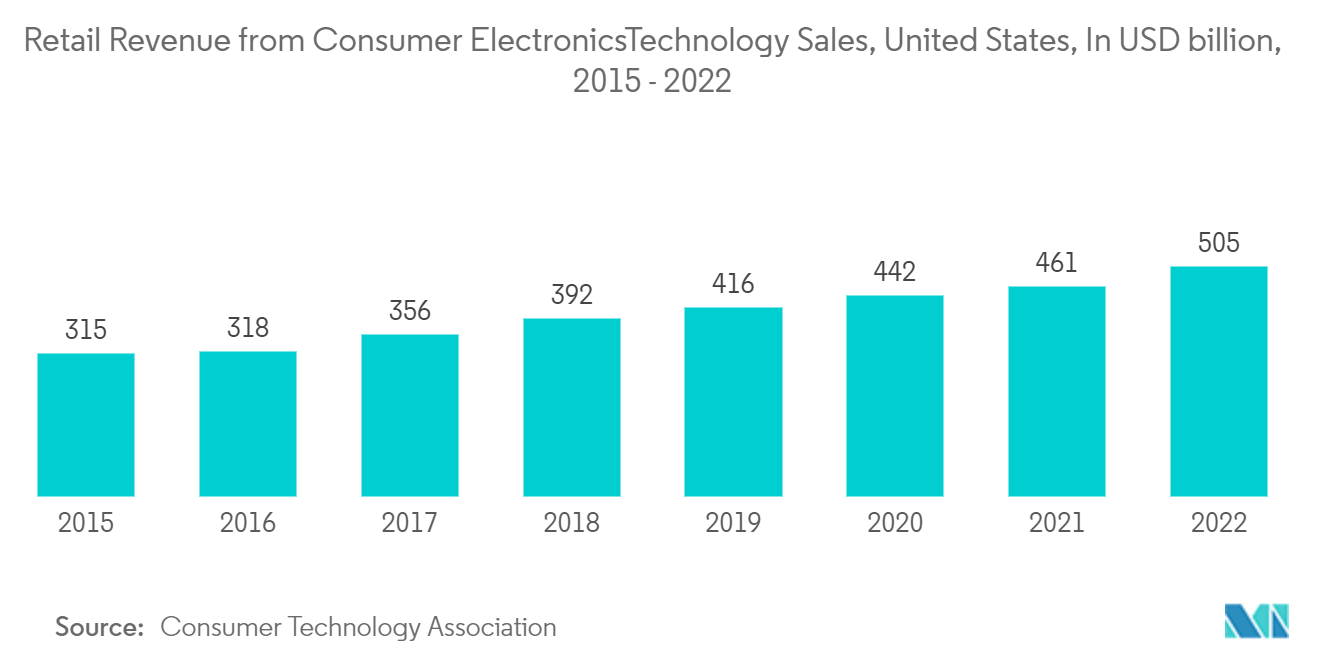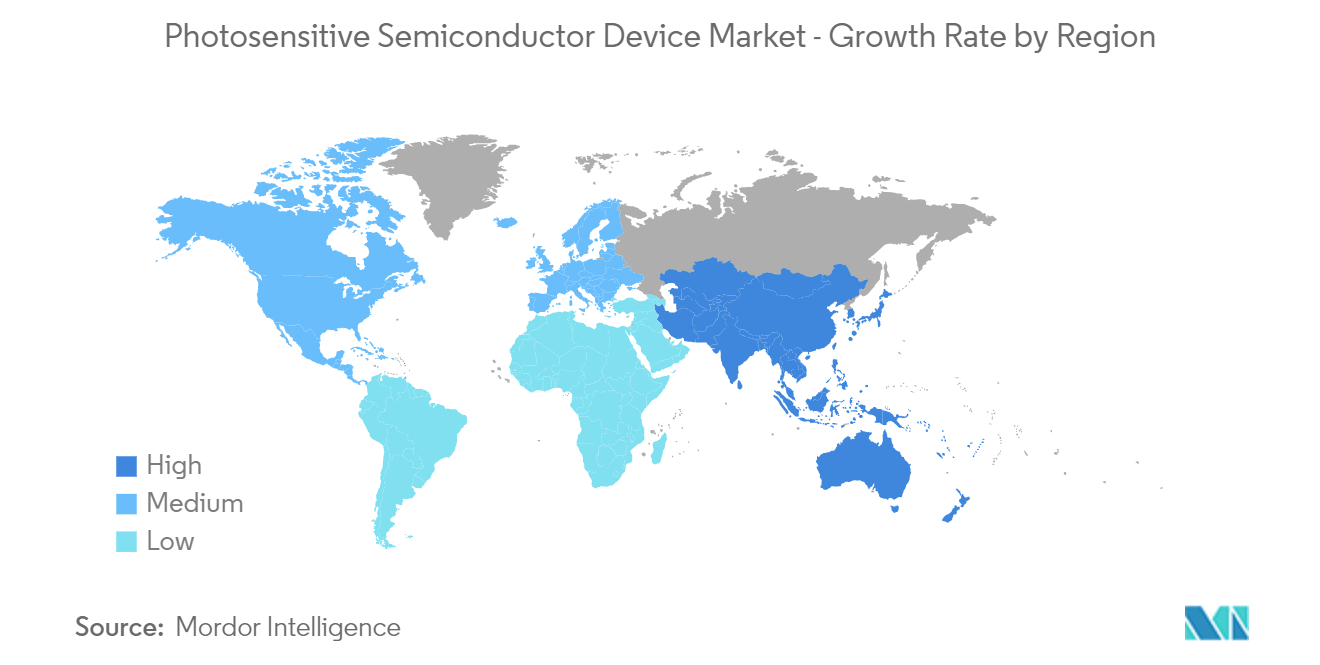Market Trends of Photosensitive Semiconductor Device Industry
This section covers the major market trends shaping the Photosensitive Semiconductor Device Market according to our research experts:
Consumer Electronic Segment is Expected to Hold Largest Market Share
- Photosensitive semiconductor devices are primarily used as image sensors in many imaging devices and digital cameras to enhance the quality of cauterization and storage of images. These imaging applications have high adoption in industrial, media, medical, and consumer applications.
- Due to the increasing demand for smartphones, security cameras, high-definition cameras, and camcorders, the photosensitive semiconductor device market is expected to grow more during the forecast period. Manufacturers worldwide strive to enhance main parameters, such as resolution, performance, and pixel size.
- Additionally, the increase in the use of photosensitive semiconductor devices in CMOS sensors is providing a foothold at the low-cost end of the consumer market by offering more functions on-chip that simplify camera design. For instance, Sony's newly launched IMX686 Exmor RS 64MP CMOS sensors are being used in many mid-range phones of Samsung, Huawei, OnePlus, Xiaomi, etc.
- However, due to the vast economic downturn experienced by companies across industries, employees are also witnessing salary cuts. This may directly impact the purchase decision for consumer electronics designed with photosensitive semiconductor devices and affect the growth of the market on a short-term basis.

Asia Pacific is Expected to be the Fastest growing Region
- Across the region, there is an increase in spending by the middle class on consumer electronics products such as smartphones, tablets, televisions, etc., which is driving the consumer electronics market growth and guiding the growth of photosensitive semiconductor devices in the region.
- Many companies are using new technologies and development in the region that can drive the market. For instance, in May 2022, Mitsubishi Electric Corporation announced that the company had developed an on-orbit additive-manufacturing technology that uses photosensitive resin and solar ultraviolet light for the 3D printing of satellite antennas in the vacuum of outer space.
- Additionally, in January 2022. Toray Industries, Inc. announced that the company had developed a negative photosensitive polyimide material. This new offering maintains polyimides' characteristic thermal resistance, mechanical properties, and adhesiveness while increasing resolutions and enabling high-definition pattern formation on 100-micrometer and other thick films. And that will drive the market significantly.
- The high investments in developing the infrastructure of armed forces in the region have boosted the market's growth. For instance, according to an official document and military sources, India has spent USD 18.76 billion in the year 2022-23 on its defense and armed forces, which is expected to increase more in the future to update the armed forces and reinforce their combat capacities over regional rivals. These investments will increase the demand for surveillance equipment, which will, in turn, boost the growth of photosensitive semiconductor devices in the area.


